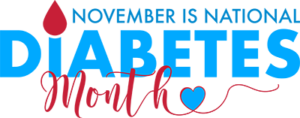 November marks both the start of the holiday season and also National Diabetes Month. It’s no coincidence that a push for education and awareness about diabetes, a disease that can be both caused by and controlled by diet, comes at a time of year when eating and drinking in abundance is a social norm.
November marks both the start of the holiday season and also National Diabetes Month. It’s no coincidence that a push for education and awareness about diabetes, a disease that can be both caused by and controlled by diet, comes at a time of year when eating and drinking in abundance is a social norm.
Among U.S. adults 18 years of age and older, diabetes is most prevalent among American Indian and Alaska Native adults, followed by non-Hispanic Black adults and then Hispanic adults. Non-Hispanic Asian adults and non-Hispanic White adults follow in fourth and fifth place respectively.
Diabetes falls into two main categories—type 1 diabetes, which is actually an autoimmune disease in which a person’s body does not make insulin, and type 2 diabetes which is when a person’s body experiences insulin resistance due to too much body fat. Type 1 diabetes is a condition you are typically born with and type 2 diabetes is a condition that is typically acquired through poor diet and lifestyle choices, although in rare cases certain medications and infections can trigger type 2 diabetes. Type 1 diabetes often affects children, adolescents and young adults while type 2 diabetes is considered an adult-onset diabetes.
Another important difference between type 1 and type 2 diabetes is that people who have type 1 diabetes will need to take insulin for their entire life while those with type 2 diabetes can reverse their need for insulin through healthy diet and lifestyle choices.
38.4% of Americans have diabetes…some just don’t know it yet.
Diabetes is the 8th leading cause of death in the United States, but the most common chronic condition.
The Centers for Disease Control says that 29.7 million Americans have been diagnosed with diabetes
while 8.7 million are actually undiagnosed. Another 38% of U.S. adults have prediabetes based on their fasting A1C (blood test used to diagnose diabetes) results.
